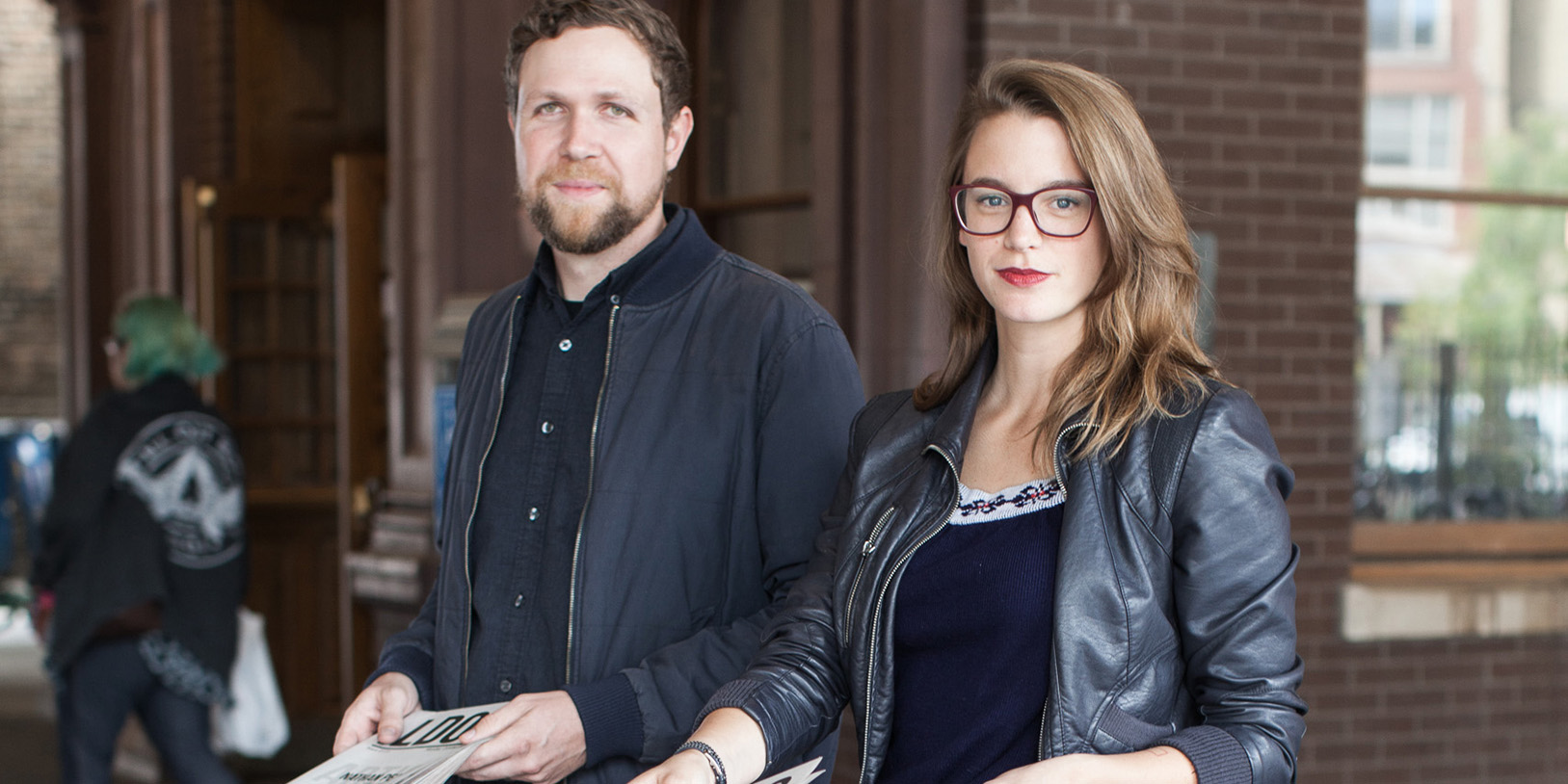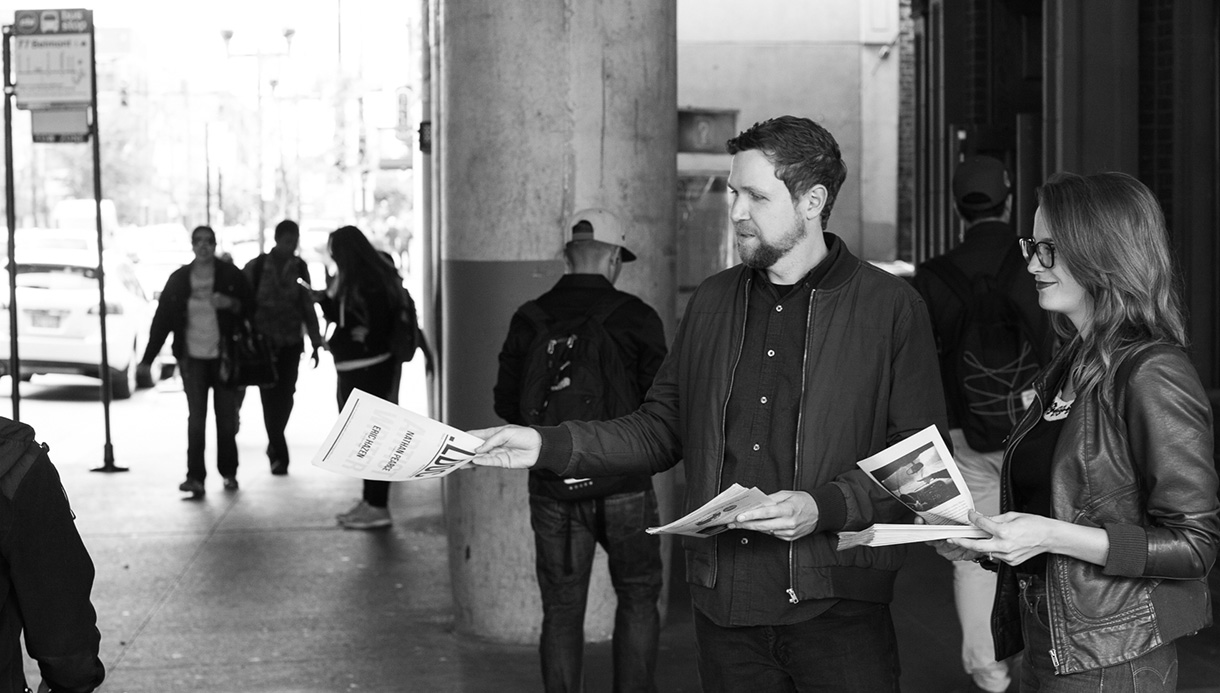Reading on the Rails
 Danielle Wilcox (MFA ’15) and her husband Joseph Wade Wilcox (Photos by Phil Dembinski)
Danielle Wilcox (MFA ’15) and her husband Joseph Wade Wilcox (Photos by Phil Dembinski)If you ride the Red Line during rush hour, you may have been handed a copy of LDOC, a free newsprint publication pairing the work of a creative writer and a photographer every issue. The publication was likely handed out to you by its founders Danielle Wilcox (MFA ’15) and her husband Joseph Wade Wilcox. The couple launched the project in early October after winning the national competition for the 2015 Crusade Engagement Grant.
The second issue of LDOC was distributed on Monday, Nov. 16. I sat down with Wilcox to ask about the first stages of their yearlong grant.
Q: You’re on your second issue now. What was the first day of distribution like? Any surprises?
A: I'm one of those people who puts their headphones on and walks as quickly as I can from the street into the L station, so I was nervous to hand out things to strangers because I'd never done something like that before. Chicago's taught me to do that. This project changed the way I interact with strangers in public. After handing out just a few issues, my nervous feelings were replaced with a reflection on my role as a member of Chicago's community. We chose the Red Line, the most representative of Chicago’s diverse population, in order to connect with as many neighborhoods [as possible] through art.
Q.Why did you choose the medium of newsprint specifically?
A: There’s an ephemeral quality to newsprint that Joe and I find attractive. There is something about the curling and yellowing of the paper, and how circulating information in this way is almost obsolete. Mainly, the image of people opening a paper on the train sealed it for us.
Q: What are some of your guiding principles in curating LDOC so that the two artists’ works belong together?
Our December issues feature photographer Rita Koehler and writer Amy Giacalone (MFA ’15). Both focus on women, but in very different ways. We like to pair work that feels familiar to each other but, once investigated, creates a more complicated experience for the audience.
Q: You studied fiction in school. How did your experience at Columbia shape this project?
A: In short, I met talented writers who inspired me—some of whom have been in the first few issues of LDOC. I’ve also had professors at Columbia remind me that careers aren’t made during your MFA and that you must hustle all the time. You must say yes to everything and write as if it's the only piece of yours anyone will ever see.
Q: Why do you think your project proposal, out of hundreds, won the grant?
A: I think we won the Crusade Engagement Grant for two reasons. The first is that we had an ambitious idea … Joe and I lived in Portland prior to Chicago, and this project feels a lot like something we’d see people do there. The second reason, I like to believe, is because we wrote an awesome grant [proposal]. Applying for and writing grants really stems from being able to answer the question they’ve posed almost better than how they asked it. If they don’t ask for examples, give them anyway. Always answer more than what they've asked.
Q: Any ideas on expanding beyond the Red Line? Where do you see LDOC a year from now?
A: Now that we’ve got our systems in place for submissions, curation, printing and distribution, we can play it by ear. Ideally we'll continue with the publication, maybe in a pared-down way, but still having a presence on the Red Line. We’re working on getting LDOC boxes so our audience can grab one whenever without having to go a specific coffee shop or distribution stop. We'd love to expand to other lines so it's easy for anyone in Chicago to connect through these artists.
